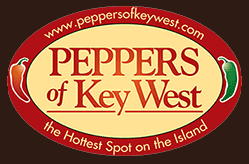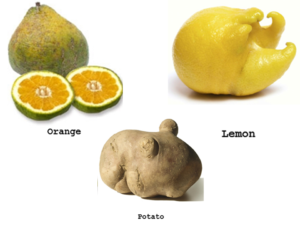The Ugly Food Movement
There is a food movement in the states that is slowly gaining traction called the “Ugly Food Movement”. In our politically correct world some organizations change the movement name to “inglorious foods”, “wonky foods” or “naturally imperfect foods”. Whichever term is used, the movement has the same goals – to find a channel of distribution for ugly foods so they can be used in a conventional manner rather than ending up in a dump. Examples of ugly foods: tomatoes that are not round, zucchinis and cucumbers that are curved too much, or oranges that are shaped like a pear.
Government agencies set standards on size, shape, color, skin texture, and smell of fruits and vegetables. Produce sold in retail establishments has to pass some, or all, of these standards to be deemed good enough to sell. I am fully confident that our bureaucrats are looking out for our welfare but why do they impose standards based on appearance? The produce may look unappealing but this doesn’t hamper the taste or nutritional value gained from them? Think about this too – Americans throw away 100 million tons of food annually at an estimated cost of 165 billion dollars.
As I’m writing this I’m thinking about the movie “Shallow Hal”. Hal is a “superficial man whose fixation on the physical beauty of women gets in the way of seeing them for their inner beauty”. A person be judged on their internal worth not their external appearance. Do we have a mistaken notion that quality is based on appearance rather than content?
The first endeavor a young entrepreneur will most likely have is owning the highest grossing lemonade stand on the block. Does the lemonade she is selling require the perfect lemon or can it be slightly discolored – the peel is going to be tossed in a composter anyway (hopefully!). Your son’s first experience baking may result in an apple pie, or some semblance thereof. The apples he uses are going to be peeled and soften in the oven– does the perfect apple affect the end result of your son’s efforts? Making mom’s homemade spaghetti sauce – well, you know where this is going. Remember, half of our food production ends up in a garbage dump.
In a time of lingering economic hardship in our country, the Ugly Food Movement would appear to be a relevant means of correcting some of the food issues we are facing. More than 1 out of 10 people in our country are receiving benefits from the Supplemental Nutrition Assistance Program (food stamps). In some regions this ratio increases to an astounding 1 in 3 residents. This ugly statistic begs for ugly culinary measures. Rather than imposing regulations on food, our leaders should find ways to consume the unwanted byproducts of agricultural failure? Can we find a way to channel this regulatory deemed bad produce to “underground food saviors”, food banks, battered and abused shelters, or even animal feed?
Initiatives are starting that coincide with consumer philosophies about sustainability when it comes to waste. Seattle is expected to be the first city to start issuing food waste citations (July 2015) and will fine residents for misused food scraps that have not been recycled or composted.
The concepts of recycling, composting and the Ugly Food Movement are great ways to help sustain the planet. My personal belief – hot sauce makes everything taste better so if you have a mental disposition that “ugly food” is unappetizing, just add some hot sauce!






Leave a Reply